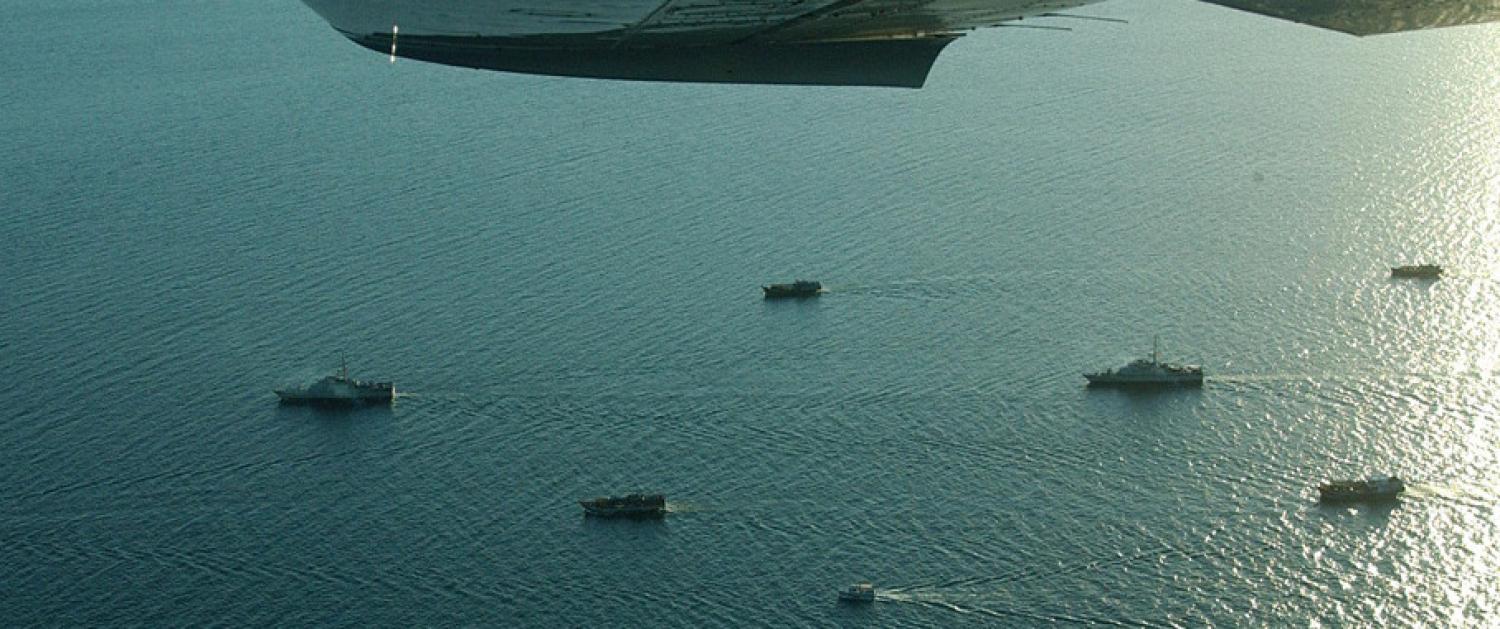Australia does not have a coast guard, but does guard its coasts. It has achieved this since 2005 by using the inter-agency operational authority now known as the Maritime Border Command. This authority combines assets from Defence and what is now the Australian Border Force (ABF) under a single commander, and has proved a highly effective mechanism for surveillance and response.
A nation with limited resources and vast maritime commitments must inevitably rely on such a civil and military combination. The Australian Navy and Air Force cannot do all the work involved, particularly in domestic enforcement. But confining all the assets to a civil organisation would significantly reduce the options for government in the event of conflict, and therefore much work has been done, including passing the Maritime Powers Act 2013, to ensure that the military and civil elements can cooperate effectively.
The longer-term problem that Australia faces with civil maritime security is thus not one of operations. It lies in management of the civil capability.
The ABF concept has many strengths, but its current organisation and that of its new parent department, Home Affairs, emphasises enforcement – and, arguably, enforcement operations on land – at the expense of managing ships and aircraft.
Significantly, the word “maritime” does not appear anywhere in the division of ministerial responsibilities within the Home Affairs portfolio. Operation Sovereign Borders, which is focused on illegal maritime arrivals, is prominent, but there is much more to maritime security than this, and much more to managing a capable civil maritime surveillance and response force.
This lack of focus is a serious problem for an organisation that operates a fleet second only to the Navy and a fixed-wing air arm second only to the Air Force. This will also curb ambitions to cooperate with the maritime security forces of other nations.
Furthermore, an essentially “generalist” approach to the recruitment of senior executive service staff within Home Affairs and its predecessor means essential specialist knowledge is lacking. There is little or no maritime, air-operational, or technical expertise, and limited maritime policy experience, in the higher levels of the department.
This lack of expertise must affect current capability management, but it also creates serious challenges for future capability development. No civil equivalent to Defence’s ten-year Integrated Investment Plan has yet been published. Yet, when viewed as a whole, the sea and airborne elements of Australia’s civil maritime security demand capable and complex systems – a demand that is increasing, not diminishing.
This absence of sufficient planning poses challenges both at sea and in the air.
The 58-metre Cape class patrol boats which first entered service in 2013 were a quantum leap ahead of the previous 38-metre Bay class of 1999, which themselves were a capability much greater than anything the then-Australian Customs Service had operated for many years. The next class of patrol boats are unlikely to be smaller or simpler, while operations in the Southern Ocean require at least one vessel of the size and capability of the 8000-tonne Ocean Shield.
The current Coastwatch contract for aerial surveillance of Australia’s vast maritime zones ends in 2021. Ten Dash 8 aircraft have been specifically modified for surface surveillance, including an extensive sensor fit and tailored data management system.
This commercial arrangement has been a success, but development of the original request for tender in 2004 and the subsequent negotiations were not simple. The analytical foundation studies and tender processes stretched over more than three years. Providing a successor capability will require just as much work.
The advent of new technologies will only increase the challenge. Home Affairs will continue to develop its intelligence capabilities, while the range of new assets entering Defence service, such as the P-8 maritime patrol aircraft, the Navy’s new offshore patrol vessels, and future unmanned surveillance aircraft make urgent the need for a whole-of-government assessment of how the maritime security system should work in future.
The trend of strategic developments also suggests that Australia’s military presence in the wider region will have to increase in the years ahead. This will force hard choices as to where our assets are employed. Defence’s new capabilities may not always be there when the ABF needs them. Ironically, there may also be calls for the ABF to increase its international presence without risking its domestic priorities.
The time has clearly come for a careful examination of just what Australia requires by way of a civil maritime security organisation to operate safely and effectively in the present, while preparing for the future. Aircraft, ships and remote-sensor systems matter, and work to replace the Coastwatch contract must not be delayed.
Discussions in the past have too often defaulted to essentially simplistic arguments about the number and type of patrol vessels or surveillance aircraft that should be in the civil force. Yet if the need for a civil surveillance and response capability is accepted, the first questions to be answered must be broader: how that capability is to be raised, trained, and sustained on a national basis in the most effective and efficient way. This is a problem which concerns Defence just as much as it does Home Affairs, and should also worry Finance and Treasury.
Civil and military operations are already integrated. The next step is to ensure a symbiotic relationship between the administration that manages the civil maritime security capabilities and the parallel organisations responsible for supporting the ships and aircraft of the Defence Force. Without it, there is not only the certainty of waste and confusion, but also the possibility of system failure when put under stress in the years ahead.

